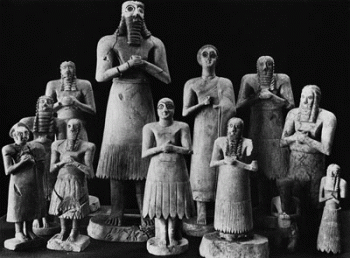American Journal of Archaeology | The Journal of the Archaeological Institute of America
You are here
The Square Temple at Tell Asmar and the Construction of Early Dynastic Mesopotamia, ca. 2900–2350 B.C.E.
October 2007 (111.4)
The Square Temple at Tell Asmar and the Construction of Early Dynastic Mesopotamia, ca. 2900–2350 B.C.E.
The archaeological subdivision of the Early Dynastic period of Mesopotamia into ED I, II, and III was established in the 1930s during excavations conducted by the Iraq Expedition of the Oriental Institute of the University of Chicago in the Diyala region east of Baghdad. The Square Temple building period, part of a temple sequence uncovered at the Diyala site of Tell Asmar, defined the ED II subdivision along with the Asmar sculpture hoard and Fara-style glyptic. In particular, the geometric-style sculpture in the Asmar hoard was considered so significant that all Diyala temple levels in which such sculpture first appeared were correlated with the onset of ED II. Subsequently, ED II has proven to be elusive in the archaeological record of greater Mesopotamia. A review of the Square Temple excavations suggests that the ED II subdivision is problematic because of the criteria upon which it was established: sculpture style was given precedence over the Square Temple material assemblage, which is ED I. It is therefore concluded here that even within the Diyala region itself the concept of ED II is largely untenable, and new interpretations are proposed for the original contexts upon which the Early Dynastic subdivisions of Mesopotamia were formulated. More generally, and as an assessment of an established chronology, this article addresses the various issues involved in negotiating the intersection of stratigraphy, material culture, and dating.
By Jean M. Evans
American Journal of Archaeology Vol. 111, No. 4 (October 2007), pp. 599–632
DOI: 10.3764/aja.111.4.599
© 2007 Archaeological Institute of America


